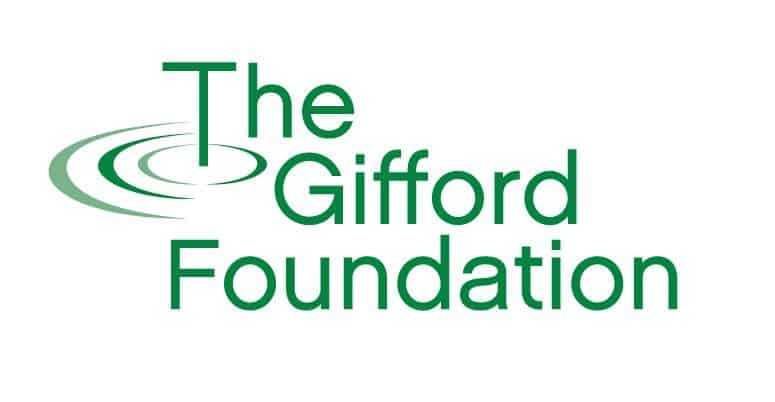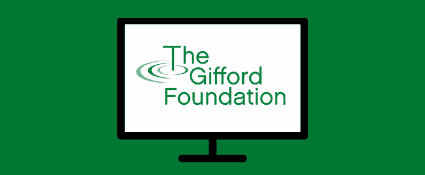Ask a Consultant: Understanding Organizational Development
Published February 8th, 2023, By Maximilian Eyle
Ryan Williams is a trained Lifecycles Capacity consultant with experience working in both the for-profit and nonprofit sectors. Currently, he is working with Gifford as one of the consultants in our Embracing Disruption cohort: Gifford’s 17-month capacity building program. He sat down with us to discuss strategies around organizational development and to set the record straight regarding common misconceptions that plague many nonprofits as they seek to strengthen and develop their impact.
Gifford: Thank you so much for making time to speak with us. To kick things off, I was thinking we should begin by defining organizational development and also dispelling some of the myths and misunderstandings surrounding this work. How do you normally frame this?
Ryan Williams: One of the first things people think about when they think of organizational development is organizational structure, but that can be a limiting lens. We are looking at structure – but we are also looking at culture, we are looking at systems, and we are looking at processes, and we are trying to understand how these things fit together as a whole to create the effectiveness and performance that we want to see.

Ryan Williams is a Syracuse-based consultant with experience working in both the for-profit and nonprofit sectors.
I like to think about it as three levels: the Macro, Meso, and Micro. For the Macro Level, I always start outside to see what is going on and see how we fit in relation to that.
I’ll look at four domains through what they call a PEST analysis. What’s going on politically? Economically? Socially/culturally? Technologically? Understanding these factors challenges people to not be so critical of self and to start brainstorming everything going on outside. Only then should they take that lens and start looking internally at the organization.
The Meso level means looking at the direct relationships that impact us. Our constituents and clients, our competitors, or partners, and understanding our relationship with them. Instead of jumping to identify what is wrong with our organization, we should ask those we serve – ‘how can we better serve you?’ We should look into why they go to another agency for services instead of us. Then, we can find those missing pieces that prevent us from delivering the utmost value.
Finally, it’s the Micro level where we begin using that information to analyze and improve our internal systems and structure.
Gifford: As a funder, we often see that organizations who are working on assessing and improving their organizational development can get tripped up by misunderstanding how to assign roles and responsibilities. Lines between staff and board roles can become blurred, with disastrous results. How do you help nonprofits avoid this?
Getting Started:
- Assess the ecosystem your organization exists in before making internal changes.
- Establish clear roles and responsibilities among staff and board.
- Your ability to communicate will define your success.
- The stories and lessons that emerge from the assessment process can be used to strengthen bonds with funders and community partners.
Ryan Williams: If I had to use a blanket approach, I would say that the role of governance (the board) is to set the strategic direction of the organization and determine the long-term success of what that organization looks like. The board members are also the ones that should have a lot of community or market knowledge. They should provide a lot of environmental information about what is going on in the community to help inform the organizational development process.
In developing the plan to be executed, that’s going to be senior and middle management staff because they understand the agency’s capacity. While implementation is everyone’s responsibility, it’s management’s job to communicate what that change looks like to everybody and I think that’s one of the crucial components to organizational development: communicate before you implement. Because if you don’t, people get mad. Communicate why change is happening, how you will be impacted, and what your role is in the process so that people know before the change happens.
There should be a feedback loop where the staff is collecting information and passing it back to management, and the management should find opportunities to share that with the board.
I will also add that the details of staff versus board responsibilities depend on where that organization is – this is why the Lifecycles process is so helpful. It is a very effective tool for understanding where you are, reaching alignment, and understanding that where we are is just a natural result of where our organization is at our stage. Is your nonprofit a startup? Is it in growth phase? Mature? Based on that, you will see general characteristics that you can expect internally in your organization. That’s a way of removing the blame and the frustration that comes from a lack of capacity.
Gifford: Speaking of capacity, I think most organizations are conscious of the fact that this work, although important, takes lots of time and resources. This means that even though they might understand that there is room for growth and improvement by diving into organizational development work, they are reluctant to pull time and resources from other areas to devote to this process. Limited capacity means making tough decisions. For organizations who are generally happy with the impact of their programming, are there other reasons they should consider tackling this kind of project?
Ryan Williams: These kinds of exercises create opportunities for board and staff to work together, which doesn’t exist often. Normally when we think about strategic planning, which is similar to organizational development, a lot of that is done by the board. But it can also be an inclusive process where you see staff participation too. Especially with that first step of understanding where we are as an agency, I think it’s important to understand that organizational development is a continuous and cyclical process and we are constantly evaluating and sharing how we are doing. I think it’s the job of staff leadership to make sure that we are making time to share that progress with the board.
With some organizations I have worked with, once per quarter they will share their total programmatic impact, operational effectiveness, and have a staff member present on a specific story. Creating those deliberate opportunities to share out what’s going on to the board creates that board buy-in. As we know, it is so difficult to get an inclusive and engaged board and to maintain that. That comes from them buying into the mission, understanding it, and having opportunities to hear the stories from staff members’ day to day experiences.
Gifford: So you’re saying that going through this process is a way to strengthen internal communication?
Ryan Williams: Yes, but not only internal communication. It can also help with communicating with funders. The process of organizational development involves identifying challenges and opportunities, so when it comes to grant writing – the institutions that are providing grants want to see that the organizations have a thorough understanding of themselves. If when submitting a grant you are able to identify those areas of improvement and how are you planning to improve them, that dramatically increases your chances of getting that grant.
Nonprofits have been around for centuries. It used to be alright for funders to support them just because they do good work. But that’s not where we are anymore. These funders want to see impact, and scaling impact has become synonymous with capacity. Organizations have to show funders that they have a clear plan of where this money is going to go.
I think it works the same for strategic partnerships. I think of these partnerships as subsidizing a nonprofit’s resources and activities. They may not have the personnel or dollars to do something, so if I can identify the key activities or resources I lack, I can communicate that more effectively to my partners so they can better engage with me as an organization to achieve greater impact.
These tools and assessments can provide a map for communicating with funders and partners honestly and effectively.
Gifford: Ryan, this has been hugely helpful. Thank you for your time and insight!
Ryan Williams: It’s been a pleasure, thanks for having me.


